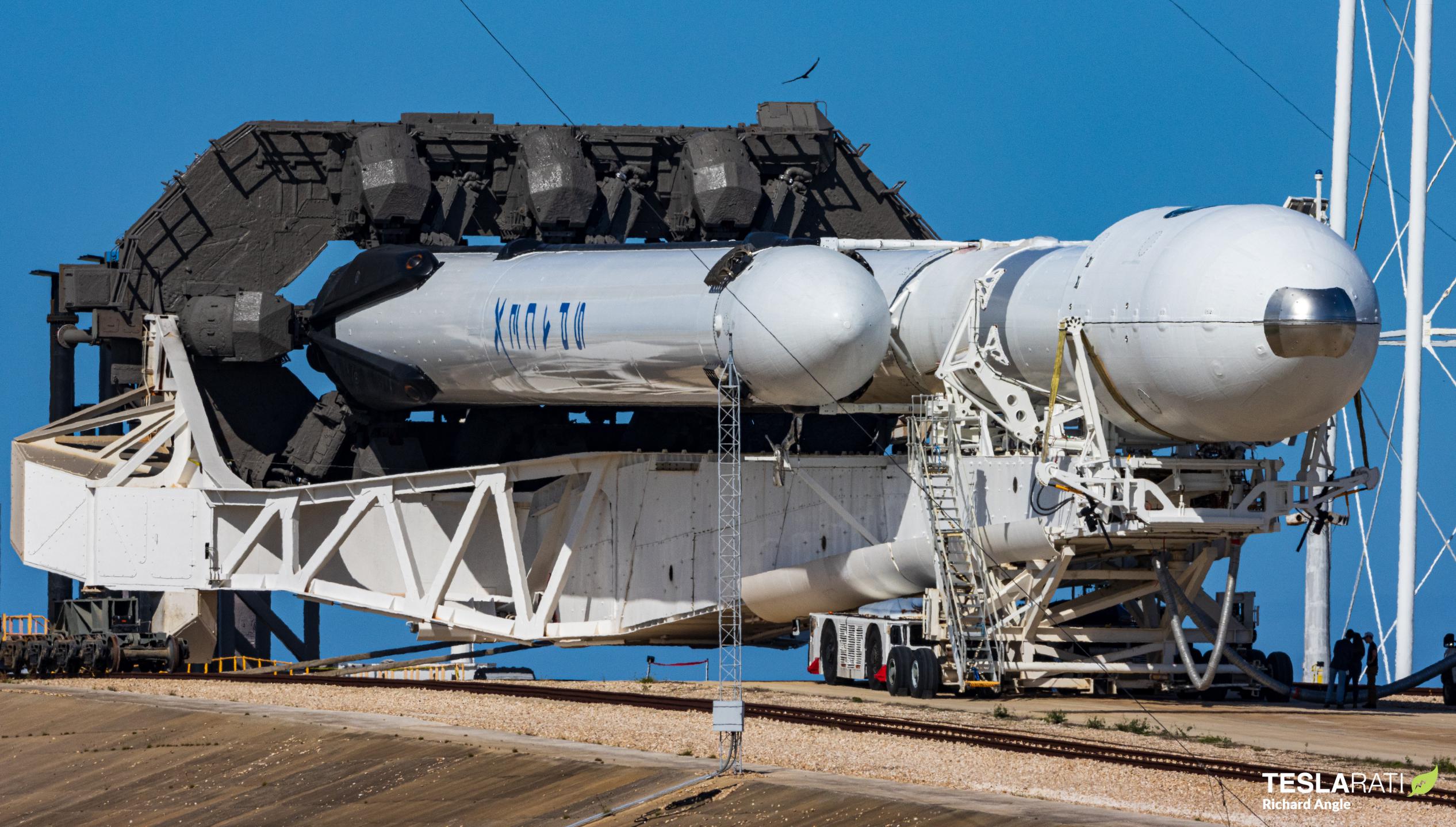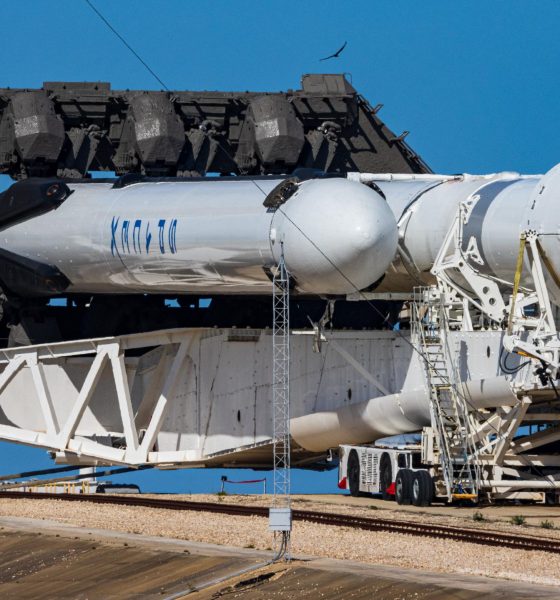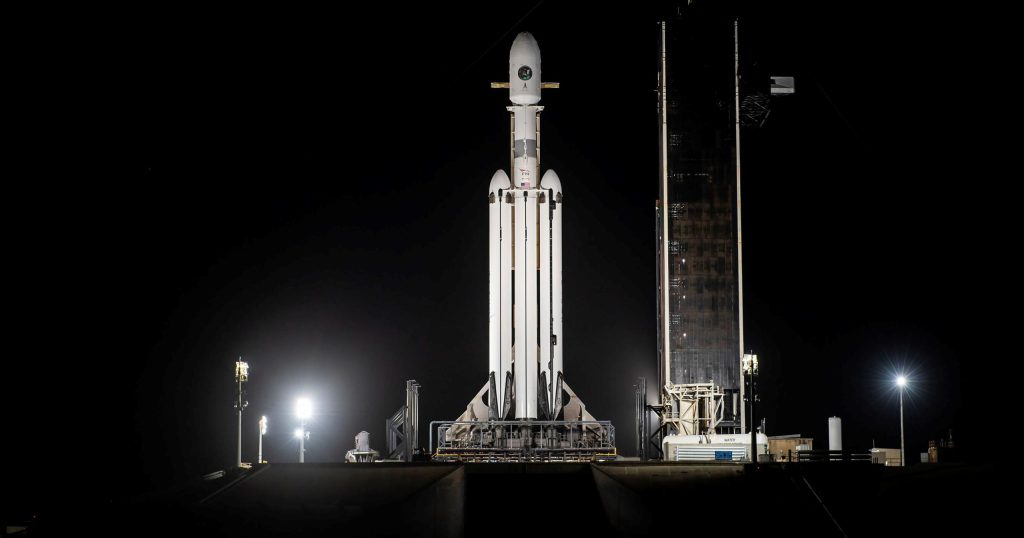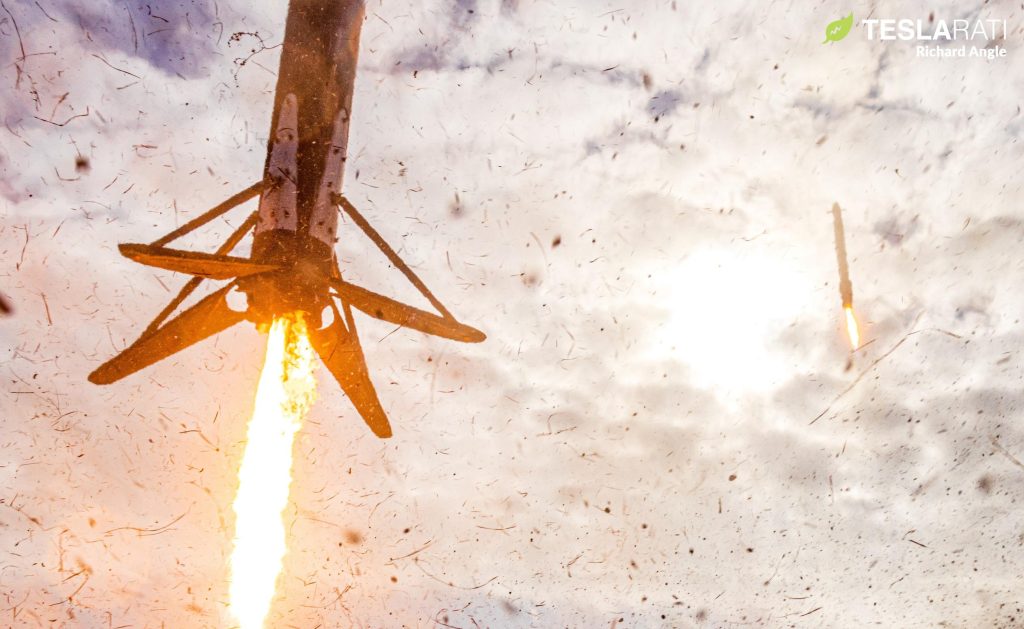

News
SpaceX gears up for busy year of Falcon Heavy launches
SpaceX is targeting no earlier than January 12th for the fifth launch of Falcon Heavy, the largest and most powerful commercial rocket in the world.
As was the case for the rocket’s third and fourth launches, the main customer behind its fifth launch is the US military. Deemed USSF-67, the mission is also expected to be very similar to Falcon Heavy’s most recent launch, USSF-44. That mission saw the massive SpaceX rocket complete its first direct launch to a geosynchronous orbit ~36,000 kilometers (~22,250 mi) above Earth’s surface, where it deployed a pair of spacecraft carrying several rideshare payloads and satellites. Save for the possibility that the US Space Force included secret payloads on USSF-44, the mission appeared to be more of a rocket test and loose collection of experiments than a major military launch.
USSF-67 will likely be similar. According to the US Space Systems Command (SSC), USSF-67 – like USSF-44 – will carry an Aerojet Rocketdyne Long Duration Propulsive EELV (LPDE) spacecraft as a main payload. Aboard LPDE-3A, which is essentially a satellite without a payload, various stakeholders will install an unknown number of experiments, instruments, and smaller satellites that can be activated or deployed once in orbit. The SSC says [PDF] that “LDPE provides critical data to inform future Space Force programs” and that “the unique experiments and prototype payloads hosted on LDPE-3A [will] advance warfighting capabilities in the areas of on-orbit threat assessment, space hazard detection, and space domain awareness.”

The update that's rolling out to the fleet makes full use of the front and rear steering travel to minimize turning circle. In this case a reduction of 1.6 feet just over the air— Wes (@wmorrill3) April 16, 2024
The mission will be Falcon Heavy’s second launch since June 2019 and is scheduled to lift off 72 days after the rocket’s USSF-44 launch, which finally ended its unplanned 1225-day hiatus. The schedule is reminiscent of 2019, when SpaceX launched its second and third Falcon Heavy rockets 75 days apart. The second of those two missions (STP-2) was primarily a test flight for the US Air Force (now the Space Force) meant to both push Falcon Heavy to its limits with a complex trajectory and demonstrate Falcon booster reusability. To accomplish the latter goal, STP-2 reused two of the three Falcon Heavy boosters that supported the rocket’s Arabsat 6A communications satellite launch two months prior. USSF-67 will also reuse both of USSF-44’s Falcon Heavy side boosters.
STP-2 was ultimately a near-flawless success, but endless payload delays left Falcon Heavy with nothing to launch for more than three years. Following its return to flight in late 2022, Falcon Heavy may finally be able to properly stretch its wings in 2023. Of course, this isn’t the first time that’s appeared to be the case. In February 2021, there were many signs that SpaceX was preparing to launch Falcon Heavy in mid-2021. And in late 2021, there were strong signs that SpaceX customers were on track for up to five Falcon Heavy launches in 2022.


Now, for the second time, there are five Falcon Heavy rockets tentatively scheduled to launch this year (2023). But the situation is not identical. Numerous long-delayed payloads like the first ViaSat-3 and Jupiter-3 satellites and the US military’s mysterious USSF-67 and USSF-52 spacecraft are finally on the cusp of crossing their respective finish lines. NASA’s Psyche asteroid explorer spacecraft has also survived a continuation review after running into major software issues that precluded a 2022 launch attempt. And Falcon Heavy finally launched USSF-44 – a chronically delayed mission – in November 2022.
Additionally, four of those five Falcon Heavy launches are tentatively scheduled in the first half of 2023, leaving plenty of margin for major delays in the second half of the year. But until ViaSat-3, Jupiter-3, and USSF-52 actually arrive in Florida and until NASA explicitly confirms that Psyche’s technical issues are resolved, any launch targets should be treated with extreme skepticism.
USSF-67 is thankfully much less uncertain. Like Arabsat 6A and STP-2, USSF-67 will reuse both of the Falcon Heavy side boosters recovered after USSF-44. Mirroring USSF-44, SpaceX will also intentionally expend Falcon Heavy’s new center booster to launch USSF-67 directly to geosynchronous orbit. Most importantly, LPDE-3A – the only confirmed USSF-67 payload – arrived in Florida in November 2022. USSF-67 prelaunch operations are currently running a day or two behind schedule relative to USSF-44, but all evidence indicates that the mission is on track to launch sometime in January 2023.

News
Tesla (TSLA) receives “Buy” rating and $551 PT from Canaccord Genuity
He also maintained a “Buy” rating for TSLA stock over the company’s improving long-term outlook, which is driven by autonomy and robotics.

Canaccord Genuity analyst George Gianarikas raised his Tesla (NASDAQ:TSLA) price target from $482 to $551. He also maintained a “Buy” rating for TSLA stock over the company’s improving long-term outlook, which is driven by autonomy and robotics.
The analyst’s updated note
Gianarikas lowered his 4Q25 delivery estimates but pointed to several positive factors in the Tesla story. He noted that EV adoption in emerging markets is gaining pace, and progress in FSD and the Robotaxi rollout in 2026 represent major upside drivers. Further progress in the Optimus program next year could also add more momentum for the electric vehicle maker.
“Overall, yes, 4Q25 delivery expectations are being revised lower. However, the reset in the US EV market is laying the groundwork for a more durable and attractive long-term demand environment.
“At the same time, EV penetration in emerging markets is accelerating, reinforcing Tesla’s potential multi‑year growth runway beyond the US. Global progress in FSD and the anticipated rollout of a larger robotaxi fleet in 2026 are increasingly important components of the Tesla equity story and could provide sentiment tailwinds,” the analyst wrote.
Tesla’s busy 2026
The upcoming year would be a busy one for Tesla, considering the company’s plans and targets. The autonomous two-seat Cybercab has been confirmed to start production sometime in Q2 2026, as per Elon Musk during the 2025 Annual Shareholder Meeting.
Apart from this, Tesla is also expected to unveil the next-generation Roadster on April 1, 2026. Tesla is also expected to start high-volume production of the Tesla Semi in Nevada next year.
Apart from vehicle launches, Tesla has expressed its intentions to significantly ramp the rollout of FSD to several regions worldwide, such as Europe. Plans are also underway to launch more Robotaxi networks in several more key areas across the United States.
News
Waymo sues Santa Monica over order to halt overnight charging sessions
In its complaint, Waymo argued that its self-driving cars’ operations do not constitute a public nuisance, and compliance with the city’s order would cause the company irreparable harm.

Waymo has filed a lawsuit against the City of Santa Monica in Los Angeles County Superior Court, seeking to block an order that requires the company to cease overnight charging at two facilities.
In its complaint, Waymo argued that its self-driving cars’ operations do not constitute a public nuisance, and compliance with the city’s order would cause the company irreparable harm.
Nuisance claims
As noted in a report from the Los Angeles Times, Waymo’s two charging sites at Euclid Street and Broadway have operated for about a year, supporting the company’s growing fleet with round-the-clock activity. Unfortunately, this has also resulted in residents in the area reportedly being unable to sleep due to incessant beeping from self-driving taxis that are moving in and out of the charging stations around the clock.
Frustrated residents have protested against the Waymos by blocking the vehicles’ paths, placing cones, and “stacking” cars to create backups. This has also resulted in multiple calls to the police.
Last month, the city issued an order to Waymo and its charging partner, Voltera, to cease overnight operations at the charging locations, stating that the self-driving vehicles’ activities at night were a public nuisance. A December 15 meeting yielded no agreement on mitigations like software rerouting. Waymo proposed changes, but the city reportedly insisted that nothing would satisfy the irate residents.
“We are disappointed that the City has chosen an adversarial path over a collaborative one. The City’s position has been to insist that no actions taken or proposed by Waymo would satisfy the complaining neighbors and therefore must be deemed insufficient,” a Waymo spokesperson stated.
Waymo pushes back
In its legal complaint, Waymo stated that its “activities at the Broadway Facilities do not constitute a public nuisance.” The company also noted that it “faces imminent and irreparable harm to its operations, employees, and customers” from the city’s order. The suit also stated that the city was fully aware that the Voltera charging sites would be operating around the clock to support Waymo’s self-driving taxis.
The company highlighted over one million trips in Santa Monica since launch, with more than 50,000 rides starting or ending there in November alone. Waymo also criticized the city for adopting a contentious strategy against businesses.
“The City of Santa Monica’s recent actions are inconsistent with its stated goal of attracting investment. At a time when the City faces a serious fiscal crisis, officials are choosing to obstruct properly permitted investment rather than fostering a ‘ready for business’ environment,” Waymo stated.
News
Tesla FSD v14.2.2 is getting rave reviews from drivers
So far, early testers have reported buttery-smooth drives with confident performance, even at night or on twisty roads.

Tesla Full Self-Driving (Supervised) v14.2.2 is receiving positive reviews from owners, with several drivers praising the build’s lack of hesitation during lane changes and its smoother decision-making, among others.
The update, which started rolling out on Monday, also adds features like dynamic arrival pin adjustment. So far, early testers have reported buttery-smooth drives with confident performance, even at night or on twisty roads.
Owners highlight major improvements
Longtime Tesla owner and FSD user @BLKMDL3 shared a detailed 10-hour impression of FSD v14.2.2, noting that the system exhibited “zero lane change hesitation” and “extremely refined” lane choices. He praised Mad Max mode’s performance, stellar parking in locations including ticket dispensers, and impressive canyon runs even in dark conditions.
Fellow FSD user Dan Burkland reported an hour of FSD v14.2.2’s nighttime driving with “zero hesitations” and “buttery smooth” confidence reminiscent of Robotaxi rides in areas such as Austin, Texas. Veteran FSD user Whole Mars Catalog also demonstrated voice navigation via Grok, while Tesla owner Devin Olsen completed a nearly two-hour drive with FSD v14.2.2 in heavy traffic and rain with strong performance.
Closer to unsupervised
FSD has been receiving rave reviews, even from Tesla’s competitors. Xpeng CEO He Xiaopeng, for one, offered fresh praise for FSD v14.2 after visiting Silicon Valley. Following extended test drives of Tesla vehicles running the latest FSD software, He stated that the system has made major strides, reinforcing his view that Tesla’s approach to autonomy is indeed the proper path towards autonomy.
According to He, Tesla’s FSD has evolved from a smooth Level 2 advanced driver assistance system into what he described as a “near-Level 4” experience in terms of capabilities. While acknowledging that areas of improvement are still present, the Xpeng CEO stated that FSD’s current iteration significantly surpasses last year’s capabilities. He also reiterated his belief that Tesla’s strategy of using the same autonomous software and hardware architecture across private vehicles and robotaxis is the right long-term approach, as it would allow users to bypass intermediate autonomy stages and move closer to Level 4 functionality.








